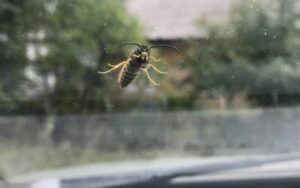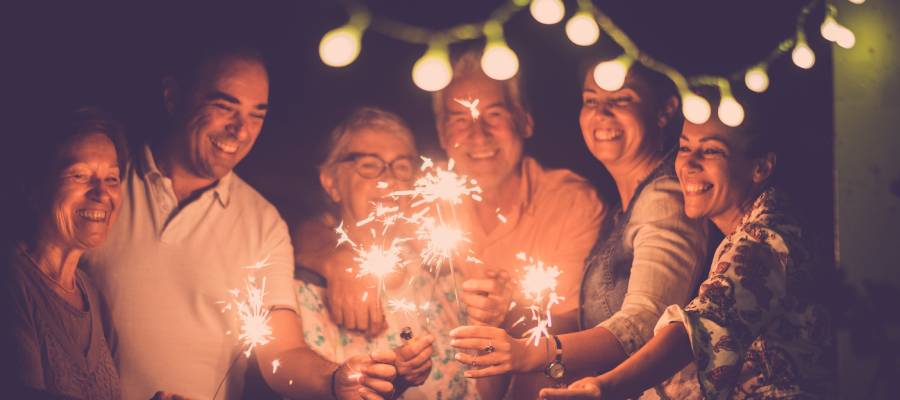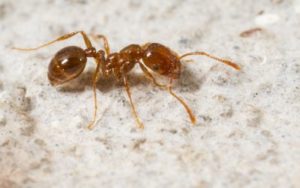 Are you preparing for an exciting road trip this summer? You may want to hold your horsepower for a moment. Warm weather here in Baton Rouge can bring an unexpected problem for many local car owners: wasps moving into their vehicles. Yes, those stinging insects can transform your car into a nerve-wracking buzz-fest. Thankfully, with a little preventative maintenance, you can avoid finding these unwanted guests while trying to drive peacefully down the road. Read on to learn Dugas Pest Control‘s top tips for wasp-proofing your car.
Are you preparing for an exciting road trip this summer? You may want to hold your horsepower for a moment. Warm weather here in Baton Rouge can bring an unexpected problem for many local car owners: wasps moving into their vehicles. Yes, those stinging insects can transform your car into a nerve-wracking buzz-fest. Thankfully, with a little preventative maintenance, you can avoid finding these unwanted guests while trying to drive peacefully down the road. Read on to learn Dugas Pest Control‘s top tips for wasp-proofing your car.
Why Do I Have Wasps in My Car?
Wasps are opportunistic creatures that look for sheltered places to build their nests. They prefer dark, dry, and warm areas protected from predators and weather. Your car may meet all these circumstances, especially if you park it for a long period of time or only drive occasionally.
Wasps can enter your car through small openings such as cracks, vents, windows, or doors. They may also travel into your car by hitching a ride on your clothing or personal items. Once inside your car, they will look for a suitable spot to start their nest. Most wasps will build nests in undisturbed areas such as the trunk, engine compartment, or wheel wells. However, some may also build a home beneath the seats, behind the dashboard, or in the glove box – particularly if your car has been sitting empty for a long time.
How to Prevent Wasps
The last thing you need to deal with while driving is a wasp buzzing around your head. Taking a few steps to prevent stinging insects in your vehicle could save you from that terrifying and potentially dangerous situation. To deter wasps from building a nest in your car, follow these tips:
- Do not leave the car empty for long: Check and drive your vehicle regularly to keep wasps from settling into your space.
- Keep your car clean: Sugary drinks and trash can provide a food source for pests. Routine cleaning can make your car less attractive to wasps.
- Seal any cracks or gaps: Caulk, tape, or mesh can block entry for any pests, including stinging insects.
- Close and lock your doors and windows: An open window makes it easy for wasps and other pests to get inside. Taking a few seconds to close everything up can go a long way.
What to Do If You Discover Wasps in Your Car
Disturbing or attempting to remove wasps on your own is not advisable. Wasps are very defensive of their nest and will attack anyone threatening them. They can sting multiple times and cause severe allergic reactions in some people.
The best action is to contact a reputable pest control company immediately. Without putting you or your car in danger, they will remove the nest and the wasps using their expertise and equipment. Additionally, they will check your vehicle for additional indications of an infestation and offer advice on avoiding further issues.
Wasp Control Experts in Baton Rouge
If you need help removing wasps in Baton Rouge, look no further than Dugas Pest Control. We are a full-service pest management company serving local homes and businesses since . Our highly qualified professionals are well-versed in the best industry practices for pest control, and we can help quickly and safely handle your wasp situation. With our team, you can expect:
- Certified technicians with local expertise
- Environmentally responsible products and practices
- 100% satisfaction guarantee
Do not let wasps ruin your summer or damage your car. Contact Dugas Pest Control today and let them handle your wasp problem.

 Warm weather is back here in Baton Rouge, which means longer days and more opportunities to get together with friends and enjoy the sunshine. At the same time, the moist and warm conditions of our spring and summer climate create the perfect breeding ground for pests like
Warm weather is back here in Baton Rouge, which means longer days and more opportunities to get together with friends and enjoy the sunshine. At the same time, the moist and warm conditions of our spring and summer climate create the perfect breeding ground for pests like  way into your home and yard. These swarms are unwelcome guests to an otherwise pleasant season. There are, how ever, ways to protect your home and yard from infestations
way into your home and yard. These swarms are unwelcome guests to an otherwise pleasant season. There are, how ever, ways to protect your home and yard from infestations 





 the Baton Rouge area, bugs are a part of life, particularly in the summer. And despite the heat, there are still plenty of barbecues, festivals and picnics going on outside in the summer. These outdoor events can put stinging insects and people on a collision course. Fortunately, there are several techniques that can help keep bees and wasps away, naturally. Keep reading to learn more!
the Baton Rouge area, bugs are a part of life, particularly in the summer. And despite the heat, there are still plenty of barbecues, festivals and picnics going on outside in the summer. These outdoor events can put stinging insects and people on a collision course. Fortunately, there are several techniques that can help keep bees and wasps away, naturally. Keep reading to learn more!